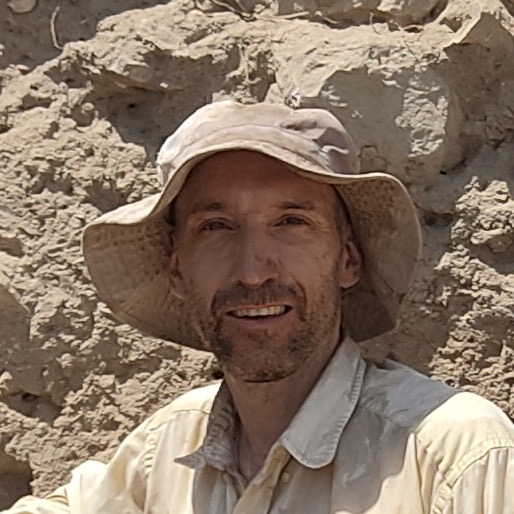May 2025 | Volume 26 No. 2
Interactive Excavation
Listen to this article:
Archaeology investigates the ancient human past based on the things people left behind – from pottery and stone tools to architecture and landscapes. In order to collect information, archaeologists excavate and remove artefacts and structures from a site, so this science is often regarded as ‘destructive’ since no one else can dig the same place again. Although technology has improved the accuracy and efficiency of how data about the removed remains is preserved, most archaeologists cannot keep pace with the technological changes made by profit-driven industries.
Archaeologists at HKU, however, are not merely keeping up with technology, they are leading the development of innovative new ways to deploy this technology for data collection and use during fieldwork. This begins with the high-resolution 3D scanning of the excavation and then incorporates the wearing of mixed and augmented reality (MR/AR) headsets by team members who are digging on the site.
With these technologies, the team are pioneering the interactive application of digital 3D scientific data at archaeological sites – allowing the artefacts and spaces to be revisited, with virtual models anchored back in their original places.
“Archaeological excavations happen in the realm of length, width and height; this is our 3D world. It made sense to not only excavate, but also study archaeology in 3D using new technologies,” said PhD candidate Mr Hayk Azizbekyan who is leading this research under the supervision of Professor Peter J Cobb, Assistant Professor in the School of Humanities, Faculty of Arts.
“Our digital 3D models of the excavation contain inherent geopositional information, so we can automatically reposition them at the site using the MR/AR headsets,” explained Professor Cobb. “Augmented reality provides a visual digital overlay on top of our real surroundings, allowing us to see both the digital content and the physical reality. Mixed reality takes this to the next level, enabling users not only to see, but also interact with the digital content in an embodied manner, using hand gestures and voice commands.”
Professor Cobb’s team have been using the new technology for HKU’s fieldwork in Armenia as part of his Ararat Plain Southeast Archaeological Project (APSAP), a collaboration with the Institute of Archaeology and Ethnography, National Academy of Sciences of the Republic of Armenia. APSAP is excavating the 3,500-year-old Vedi Fortress, situated within the Ancient Near East – the area of the world that saw the first agriculture, states, cities and writing.
Big data collection
Asked why this has not been used by other archaeologists before, Mr Azizbekyan said that previously MR/AR technology has simply not been good enough, though recent advancements have provided new opportunities. This work also relies on the team’s cutting-edge efforts at big data collection at the site in Armenia.
“Even though the 3D recording of an entire excavation takes significant time and data storage, this is the most responsible way to conduct comprehensive field research,” said Professor Cobb.
The team’s development of the technology has been a cross-disciplinary exercise. Working closely at the Faculty of Engineering’s Tam Wing Fan Innovation Wing, the archaeologists were able to recruit engineering students to help. They have also partnered with Professor Evan Peng from the Department of Electrical and Electronic Engineering, who is an expert in computer vision and displays.
“Some student computer programmers help us develop new headset applications,” said Mr Azizbekyan, who received the University’s Research Postgraduate Student Innovation Award to support his work. “Other students help us overcome the limitations of the existing technology by building our own AR glasses, rather than waiting for the market. Engineering students are interested in experiencing archaeology, and have had a chance to travel to Armenia with us to contribute to our overall goals. We have established a strong collaboration with the Faculty of Engineering that will continue for many years in the future.”
Hands-free digging
Another benefit of MR/AR headsets is the ability for them to replace the smartphones used for basic documentation of excavations, allowing archaeologists to keep their hands free for digging. The team have developed advanced voice controls with AI to take photographs and record a narrative journal about their work.
“We also developed a novel depth-guidance system with the headsets,” said Professor Cobb. “This means that a device shows us how deep to dig, without traditional measuring tools. We plan to experiment with many other new innovative uses as we continue to work towards our future vision for revolutionising how archaeologists use technology to digitally augment their vision in the future.”
This research has received wide international attention since its publication in the Journal of Computer Applications in Archaeology. Other archaeologists have reached out to the HKU team with an interest in using the technology. “This gives us added motivation to create a complete working prototype to benefit the whole archaeological community,” said Mr Azizbekyan.
Even though the 3D recording of an entire excavation takes significant time and data storage, this is the most responsible way to conduct comprehensive field research.

Professor Peter J Cobb

